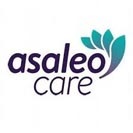The term “adiabatic” means “occurring without gain or loss of heat,” but applying this definition to common industry terms requires distinguishing between heat and temperature. When a gas is compressed under adiabatic conditions, its pressure increases and its temperature rises without the gain or loss of any heat.
Conversely, when a gas expands under adiabatic conditions, its pressure and temperature both decrease without the gain or loss of heat. A good example is the adiabatic cooling of air as it rises in the atmosphere to form clouds.
How Do Adiabatic Cooling Systems Work?
Adiabatic coolers work by using evaporation to pre-cool the air flowing through a closed loop coil.
Imagine a fluid cooler running fans but with the spray pump off. If the air is cool enough, the loop temperature is low enough to keep the system going whether it is HVAC or process cooling. Now, picture a series of cooling misters in the air intakes of the fluid cooler. When fine mist of water entering the fluid cooler rapidly evaporate, absorb from the air the latent heat required for evaporation and, therefore, cause the temperature of the air to decrease.
Now the air entering the fluid cooler is low enough to deliver the right temperature water back to the process. Adiabatic cooling systems work on the same principle, but use a variety of means to pre-cool the air before it flows through the coil. Wetting pads, thin film fill, plastic mesh and mist nozzles are commonly used to create enough surface air for the water to quickly and completely evaporate.
So How Do Adiabatic Fluid Coolers Save Water?
Adiabatic cooling systems save water by operating as a dry cooler whenever the load is light enough or the air is cool enough to do so, drawing ambient air across the closed loop heat exchangers to remove the heat from the process. When ambient temperatures begin to rise or load conditions increase, fan speed also increases, if temperature can not be maintained, a wet mode is achieved by spraying mains water over the pre cooler pads to pre cool the air entering heat exchanger, eliminating the need for evaporation of the process water like in a traditional open cooling tower system.
Do Adiabatic Cooling System Costs Less to Operate?
Saving water is important, but it must be balanced with the total cost of operation. Adiabatic systems cost less to operate when compared to traditional cooling tower systems. There is no need to register an adiabatic cooler for compliance, there is no monthly ongoing chemical treatment costs, there is a significant reduction in energy consumption and 95% less water consumption per annum when compared to traditional cooling tower systems.
Do Adiabatic Cooling Towers Have Scale Problems?
While manufacturers downplay the scale problems in their wetted pads and thin film fill, we know from experience that anytime water evaporates to dry, salts of evaporation form.
Traditional cooling towers are engineered to minimise the impact of dry off, but adiabatic systems are designed specifically to evaporate water completely to dry. Calcium carbonate scale will accumulate on the wetted surfaces of the adiabatic system just like it does where water evaporates completely to dry on any cooling tower.
Do Adiabatic Fluid Coolers Have Legionella Concerns?
Legionella can be a problem any time warm water is used to create aerosols.
Much like traditional cooling towers, some adiabatic designs are prone to Legionella issues. Risk often comes down to design and engineering. The main benefit from Adiabatic Fluid coolers vs cooling towers is the closed loop design where process water does not come in contact with the ambient air eliminating the risk of Legionella. Accessories to the system such as buffer tanks and water spray collection tanks should always be properly maintained to eliminate the risk of Legionella.
What Water Treatment Equipment Should I Recommend for an Adiabatic Cooling System?
Water supplying the wetted pad or mist nozzles is generally not recirculated and is designed to evaporate completely so no water treatment is needed.
While these features are not sumps to collect recirculating water, system design varies and the water that collects at these points may benefit from treatment to prevent corrosion and microbiological growth. Marketing brochures always show clean systems, but experience proves that they do not stay clean without proper treatment and preventative maintenance.



































































